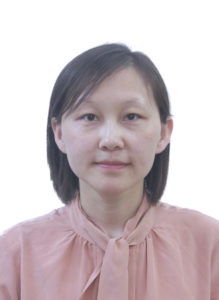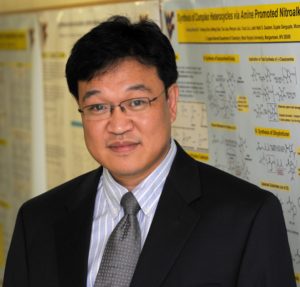To further thank and recognise the support from our excellent reviewer community, we are highlighting reviewers who have provided exceptional support to the journal over the past year.
This month, we’ll be highlighting Bhisma Kumar Patel, Gloria Mazzone, Ting Yang and Xiaodong Michael Shi. We asked our reviewers a few questions about what they enjoy about reviewing, and their thoughts on how to provide a useful review.
Bhisma Kumar Patel, Indian Institute of Technology Guwahati. Our group is focused on transition-metal catalyzed cascade/annulation and C-H bond functionalization. We also develop sustainable protocols employing photo and electrochemistry.
Gloria Mazzone, University of Calabria. My research is focused on the use of computational approaches in medicinal chemistry for studying the mechanism of action of drugs and rationally designing new potential therapeutic agents.
Ting Yang, Northeastern University. My research interest is focused on affinity interfaces and their applications in liquid biopsy, pathogen detection and immune-sensing.
Xiaodong Michael Shi, University of South Florida. Our research focuses on the development of new synthetic methodologies from new catalyst and reagent development. We are particularly interested in applying 1,2,3-triazole derivatives as ligands in tuning transition metal reactivity with applications in synthesis.
What encouraged you to review for Chemical Science?
Bhisma Kumar Patel: Chemical Science is a prestigious journal published by the Royal Society of Chemistry in interdisciplinary science that always brings novel and cutting-edge research. So, it’s always a treat to read and review excellent works that keep me up-to-date with the latest trends in scientific research. The review process gives me the opportunity to improve the quality of the publication by providing constructive suggestions.
Xiaodong Michael Shi: Chemical Science is one of the highest quality journals in the field of chemical research. It is always a great pleasure to be a reviewer for the journal where I proudly publish my own work. In addition, the constructive communication from reviewers to me has been extremely helpful and I would like return the favor to the community as it is my honor and responsibility.
What has been your biggest learning point from reviewing?
Ting Yang: The reviewing paper is a mirror that reflects the flaws you might have when submitting your own papers, so during judging, you also learn and improve.
What would you recommend to new reviewers to ensure their report is helpful?
Gloria Mazzone: Looking at the paper with two perspectives, the first one that wants to catch the strengths of the work, the second one searching for weakness. Combining the reports deriving from the two analysis should provide a surely helpful report for the authors.
What do you enjoy most about reviewing?
Xiaodong Michael Shi: Be the first reader of the exciting works and educate myself with the most recent discovery in the community. This is particular true while reviewing works for top-tier journals, like Chemical Science.
Ting Yang: To help the authors to improve their manuscript together is the most enjoyable part about reviewing.
How do you find that Chemical Science has contributed to your research field?
Bhisma Kumar Patel: Chemical Science always publishes high-impact results supported by properly analyzed data. The published works consist of unexploited synthetic problems that become the foundation of other positions and pave the way to build something meaningful for society. Thus, I believe that Chemical Science has greatly contributed to the field of synthetic methodology.
What advice would you give a first-time author looking to maximise their chances of successful peer review?
Gloria Mazzone: Undoubtedly to present the results in as clear as possible highlighting the novelty and strengths of the work looking to all the literature in the specific field.
Tune in next month to meet our next group of #ChemSciReviewers!
If you want to learn more about how we support our reviewers, check out our Reviewer Hub.
Interested in joining our ever-growing reviewer community? Apply here now!
















